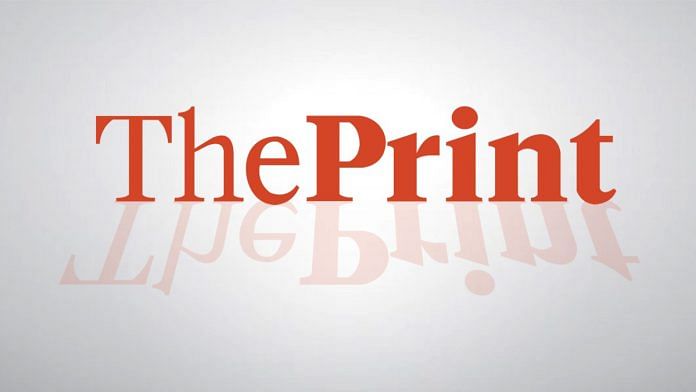New Delhi, Oct 1 (PTI) India’s free trade agreement (FTA) with four-nation bloc, European Free Trade Association (EFTA) comes into effect from Wednesday.
It is aimed at boosting two-way commerce and investments.
The EFTA members are Iceland, Liechtenstein, Norway, and Switzerland. It was signed on March 10, 2024.
* What is an FTA? It is an arrangement between two or more countries where they agree either to eliminate or reduce customs or import duties on the maximum number of goods traded between them.
Besides, they reduce barriers and ease norms to promote services exports and bilateral investments.
Across the globe, over 350 FTAs are currently in force, and most of the nations have signed one or more such agreements.
* What is the major benefit for India from this pact? India has received an investment commitment of USD 100 billion in 15 years from the group. Concurrently, the EFTA nations will aim to facilitate the generation of 1 million direct jobs in India resulting from these investment inflows.
This investment commitment explicitly excludes foreign portfolio investment (FPI), focusing on long-term capital for productive capacity building.
* What if the bloc will not fulfil the investment commitment? India will have the option of temporarily withdrawing customs duty concessions on EFTA country goods under the agreement.
Though the investments have to flow in 15 years — USD 50 billion in the first 10 years (counted after implementation of the pact) and another USD 5 billion in the next five years, the trade deal also provides for a three-year grace period to meet the obligations.
* What are the components of this trade pact? The bloc has offered 92.2 per cent of tariff lines or product categories encompassing 99.6 per cent of India’s exports. It also includes 100 per cent of non-agricultural products and tariff concessions on processed agri products.
On the other hand, India’s offer to EFTA covers 82.7 per cent of tariff lines, accounting for 95.3 per cent of EFTA exports. Over 80 per cent of these imports are gold (from Switzerland), with no change in effective duty on gold.
* Which are the sensitive sectors protected under this pact? It includes pharma, medical devices, processed food, dairy, soya, coal, and sensitive agricultural products.
* Which Indian export sectors will benefit from the agreement? Indian exporters in sectors like machinery, organic chemicals, textiles, leather, gems and jewellery, and processed foods will enjoy duty concessions. This will enhance competitiveness, reduce compliance costs and accelerate access to the EFTA market.
* What are the country-specific gains for India? Switzerland – food preparations, confectionery, biscuits, fresh grapes, nuts and seeds, fresh vegetables, and coffee Norway – food preparations, condiments, rice, processed vegetables and fruits, biscuits, malt extracts, beverages, and coffee Iceland – processed foods, chocolate & confectionery, fresh/chilled vegetables * What are the gains for EFTA? Indian consumers will get Swiss wines, watches and chocolates at cheaper rates.
For wines priced in the range of USD 5 to less than USD 15 per 750 ml bottle, India will cut duty from 150 per cent to 100 per cent in the first year. The rest of the duty cut will be in ten equal installments. The final duty will be 50 per cent at the end of the 10th year.
Similarly, for wines priced at USD 15 and above will see duty cut from 150 per cent to 75 per cent in the first year. The rest of the duty cut will be in ten equal installments. The final duty will be 25 per cent at the end of the 10th year.
Tariff to become zero immediately on entry into force of the pact: Coal except steam and coking coal, most medicines, dyes, most textiles and apparel, and iron and steel products.
Tariff to be reduced to zero in 5 years: Cod liver oil, Fish body oil, and Smartphones.
Duty to be reduced to zero in 7 years: Tuna, Trout, Salmon, Olive oil, Cocoa bean, powder, Malt products, Corn flakes, Instant tea, Roasted chicory, most machinery, Bicycle parts, Clock, and Watches.
Tariff to be reduced to zero in 10 years: Olives, Avocado, Apricot, Coffee, capsules, mate, Hop cones, Caramel, Chocolate, Medical equipment (most).
Sugar: 50 pc tariff reduction in 10 years.
* What are the gains for the Indian services sector? India has offered commitments in 105 sub-sectors to the EFTA while securing enhanced access in 128 sub-sectors from Switzerland, 114 from Norway, 107 from Liechtenstein, and 110 from Iceland.
* FTAs signed by India so far: India has inked trade deals with Sri Lanka, Bhutan, Thailand, Singapore, Malaysia, Korea, Japan, Australia, the UAE, the UK, Mauritius, and the 10-nation bloc ASEAN (Association of Southeast Asian Nations).
Since 2014, the country has signed five trade pacts with Mauritius, the UAE, Australia, EFTA and the UK. In total, India has inked 16 such pacts so far.
In addition, India is negotiating trade agreements with a number of its trading partners, such as the US, Oman, the European Union (EU), Peru, Chile, New Zealand and Israel. PTI RR SHW ANU ANU
This report is auto-generated from PTI news service. ThePrint holds no responsibility for its content.






